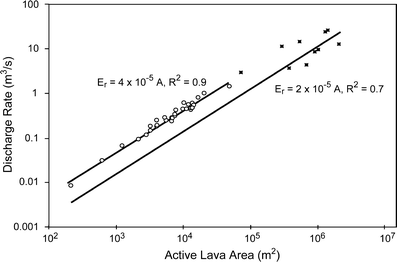Tkp 45 103 85 2007 Izmenenie 1

Weekly 1.0 weekly. 1.0 weekly 1.0.
Gliomas are highly aggressive and accompanied by numerous microglia/macrophages (MG/MP) in and about the tumor. Little is known about what MG/MP do in this setting, or whether modulating MG/MP activation might affect glioma progression.
Here, we used a glioma-microglia in culture system to establish the effects the tumor and microglia have on each other. We assessed glioma progression in vivo after MG/MP ablation or in the setting of exaggerated MG/MP activation. We show that glioma cells activate microglia but inhibit their phagocytic activities.
Local ablation of MG/MP in vivo decreased tumor size and improved survival curves. Conversely, pharmacological activation of MG/MP increased glioma size through stimulating tumor proliferation and inhibiting apoptosis. In agreement with recent reports, expression of the chemokine CCL21 is enhanced after MG/MP activation and correlates with tumor growth. Taken together, our findings demonstrate that inhibition of MG/MP activation may constitute a new and effective contribution towards suppressing glioma proliferation. Introduction Malignant gliomas are primary central nervous system (CNS) tumors arising from glial cells and are one of the deadliest cancers - median survival time is one year even with aggressive surgical resection combined with irradiation and chemotherapy. Although many therapeutic approaches have been explored, there has been no major improvement in survival over the last 30 years (; ). Gliomas are infiltrated by MG/MP, and the extent of MG/MP infiltration correlates positively with malignancy (;; ).
Microglia are capable of antigen presentation to T cells patrolling the CNS (). Upon injury, microglia undergo activation characterized by changes in morphology, gene expression, proliferation, phagocytic capacity, and migration towards the injury site (; ). The role of MG/MP in glioma progression remains controversial.
Studies reported that the immune defensive functions of glioma-infiltrating MG/MP (GIMs) are compromised. Moreover, GIMs have been proposed to promote glioma growth by secreting growth factors, immune-suppressive cytokines and angiogenic factors (;;;;; ), thus stimulating interest in therapies that modulate MG/MP activity/function. However, such approaches yielded conflicting results: injection of CpG-containing oligonucleotides, which stimulate MG/MP, induced glioma apoptosis and prolonged survival times of tumor-bearing animals in one report, whereas the same approach caused increased animal tumor size in others (; ).
Here we investigate the consequences of interaction of MG/MP and glioma cells in culture using MG/MP activation and glioma cell proliferation as functional endpoints. We examine glioma progression in a mouse model using pharmacogenetics to locally ablate MG/MP, and a pharmacological approach to exaggerate MG/MP activation.
We show that manipulation of MG/MP activation state appears to be a potentially promising novel interventional approach for gliomas. Animals C57BL/6 mice (wild type, WT) were purchased from Jackson Laboratory. CD11b-HSVTK transgenic mice were described previously (). Female CD11b-HSVTK (+/−) mice were bred with male C57BL/6 mice and the offspring genotyped by PCR using primers 5′-GACTTCCGTGGCTTCTTGCTGC-3′ and 5′-GTGCTGGCATTACAGGCGTGAG-3′. All animal procedures were approved by the Stony Brook University Institutional Animal Care and Use Committee (IACUC).
Mice were bred in-house under maximum isolation conditions on a 12:12 hour light: dark cycle with food ad libitum. Microglia and glioma cell co-culture GL261-EGFP cells were plated with rhodamine-labeled primary microglia. In brief, after isolation of primary microglia, the cells were resuspended at a density of 5×10 4 cells/ml in DMEM with 1% FBS and 20μg/ml mini-ruby (Invitrogen) (). After 48 hours, the medium was removed and 2×10 4 GL261-EGFP cells seeded on top of the microglia in DMEM with 10% FBS and desired treatments, such as 150μg/ml tuftsin, MIF/TKP (Bachem), or 4μg/ml CCL21 neutralizing antibody (PeproTech). As controls, primary microglia were either switched to the same medium without the GL261-EGFP, or microglia were seeded with 2×10 4 CRL-2541-EGFP astrocytes. The microglia-glioma interactions were followed by confocal imaging over 5 days.
May 10, 2012 Your DVR will periodically need a firmware update to ensure that your DVR is maximizing its performance and is up to date. ★★★★★ XVIM 8 Channel H.264 Recording DVR. Access Google Sites with a free Google account (for personal use) or G Suite account (for business use). H 264 network dvr firmware upgrade.
To evaluate the growth rate, cell numbers were counted by hemacytometer for 5 days. The experiments were repeated 3 times with duplicate samples per group. Segregated microglia-glioma co-cultures were set as follows: 5×10 4 microglia were seeded on 0.4μm inserts (Millicell) in DMEM with 1% FBS. After 48 hours, the inserts were moved to 24-well plates containing 5,000 GL261 cells/well in DMEM with 10% FBS. 150μg/ml tuftsin or MIF/TKP was added to the medium above the inserts. Empty inserts with the same medium were used as control. GL261 proliferation was measured every other day.